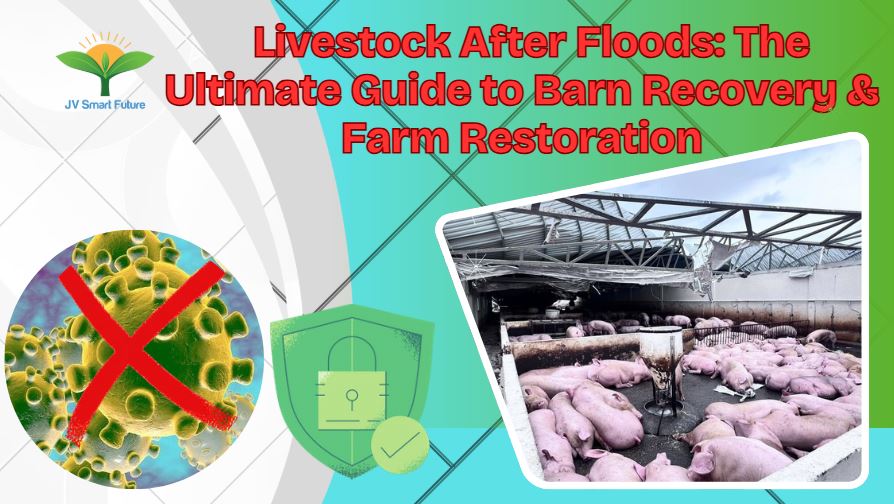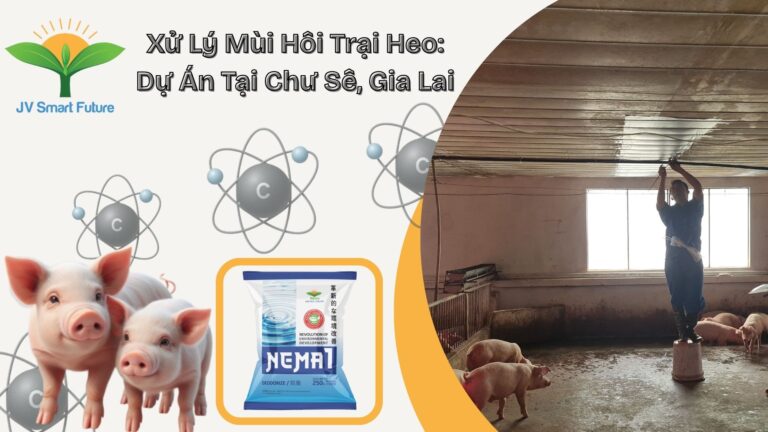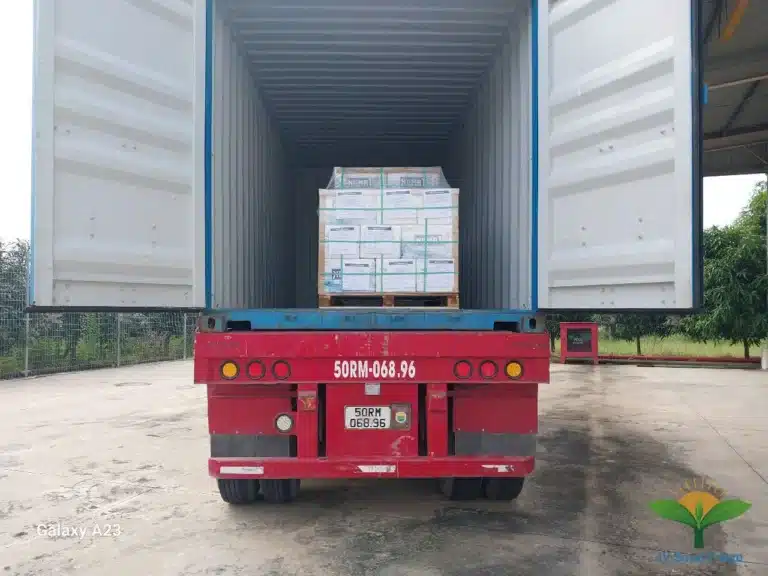Introduction: Context and Importance
In the context of climate change increasing the frequency and intensity of extreme weather events, the livestock industry is facing unprecedented challenges. Floods and storms not only cause direct damage to animals and facilities [1, 2], but also leave behind a severely polluted environment, posing a risk of widespread disease outbreaks. The challenge of managing livestock after floods profoundly affects food security, public health, and the economic stability of farmers, creating an urgent need for effective recovery strategies.
Therefore, treating barns after floods is not merely a cleanup task. It is a complex scientific and technical process that requires strict adherence to systematic and timely steps. This process is designed to achieve three core objectives: (1) prevent the outbreak and spread of dangerous diseases; (2) protect human health and minimize environmental pollution; and (3) create a solid foundation to restore production for livestock after floods safely and sustainably. This report will detail the process of treating and restoring barns through 5 strategic phases.
Part I: Emergency Response for Livestock After Floods (First 72 Hours)
This is a decisive phase where quick and precise actions can significantly reduce secondary damages and set the stage for the entire recovery process for livestock after floods.
1.1. Prioritizing Human Safety and Preliminary Assessment
Before any rescue efforts, ensuring absolute human safety must be the top priority. Immediate actions include:
- Check electrical safety: Disconnect all power sources and have them thoroughly checked by a professional before reuse to prevent fatal electric shocks.[3, 4]
- Assess structural safety: Floodwaters can weaken foundations, walls, and columns, making barns prone to collapse.[4, 5] Carefully observe for signs of danger.
- Equip with protective gear: Workers must wear full protective gear, including rubber boots, gloves, masks, and protective clothing, to avoid contact with contaminated water and pathogens.[3, 6]
1.2. Rapid Damage Assessment and Action Planning
After ensuring safety, a rapid and comprehensive damage assessment is needed to plan appropriate actions for restoring operations for livestock after floods.
- Livestock inventory: Accurately count the number of dead, lost, and surviving animals.[7]
- Assess physical infrastructure: Check the extent of damage to barns, feed storage, water systems, and equipment.[2, 4]
- Document damages: Record, photograph, and video the current state. This is essential legal evidence for accessing government support policies.[1, 8]
1.3. Managing Surviving Livestock After Floods
Surviving animals are extremely weak. Immediate intervention is necessary.
- Emergency relocation: Quickly move the herd to a high, dry, and safe area, possibly setting up temporary shelters.[7, 9, 10]
- Triage and special care: Separate injured, young, and elderly animals for priority care.[11, 12]
- Provide water and warmth: Immediately provide clean drinking water. For chilled livestock, especially young ones, use heating measures to restore body temperature.[12, 13, 14]
The surviving livestock after floods face a dangerous “triple stress”: environmental, nutritional, and psychological. If not addressed simultaneously, their immune systems will be severely compromised, paving the way for pathogens to attack. Therefore, providing warmth, clean water, and easily digestible food is a proactive and urgent disease prevention measure.
Part II: Environmental Treatment and Sanitation for Livestock After Floods (Days 3-14)
This is the key phase to eliminate pathogens, prevent outbreaks, and re-establish a safe environment for livestock after floods.
2.1. Animal Carcass Disposal – Preventing a Double Disaster
This is an urgent and top priority task right after the water recedes.[12, 13, 15] Decomposing animal carcasses are an extremely dangerous source of infection.
- Disposal principle: Must be carried out under the guidance of local veterinary officials.[12] Recommended methods are burial and incineration.[16, 17, 18]
- Burial procedure:
- Select a location: The burial pit must be at least 30m away from residential areas and water sources.[17, 19, 20]
- Dig the pit: The pit must be large enough. For example, to bury 1 ton of carcasses, the pit should be at least 1.5–2 m deep, 1.5–2 m wide, and 1.5–2 m long.[17, 19, 20]
- Execution: Spread a layer of lime powder (about 1 \text{ kg/m}2) at the bottom. Place the carcasses, sprinkle more lime or disinfectant. Cover with soil, compact it, and ensure the top layer is at least 1 m higher than the surrounding ground. Post a warning sign.[17, 19, 20]
- Incineration procedure: Can use a specialized incinerator or burn manually. After burning, the ash and remains must also be carefully buried.[17, 19, 20]
Improper disposal of animal carcasses can cause a dual environmental and public health disaster. Strict adherence to technical procedures is a legal and social responsibility.
2.2. Mechanical Cleaning and Drying of Barns
The golden rule in veterinary hygiene is “clean first, disinfect later.” Disinfectants are less effective in the presence of organic matter like mud and manure.[6, 21]
- Remove water and waste: Pump out all stagnant water. Collect and remove all mud, debris, bedding, and contaminated feed.[3, 8, 14]
- Mechanical scrubbing: Use high-pressure water jets to clean all surfaces.[22, 23]
- Drying: Open all doors for natural ventilation, use industrial fans or dehumidifiers to speed up the drying process.[3, 8, 9]
2.3. Disinfection – Re-establishing the Biosecurity Barrier
Only after the barn is completely clean and dry can the chemical disinfection phase be truly effective.
- Disinfection principle: Follow the manufacturer’s instructions. The correct spraying technique is from top to bottom, from inside to out, ensuring all surfaces are thoroughly wetted with the disinfectant solution.[6, 21, 24]
- Chemical selection: Choose broad-spectrum disinfectants. Common options include lime powder, limewater, Benkocid, Virkon, TH4.[21, 25, 24] The recommended frequency is twice a week.
- Disinfection scope: Disinfect the entire surrounding area, including paths, gates, and transport vehicles, to create effective “biosecurity circles.”[12, 13, 26, 21]
| Chemical Name | Main Active Ingredient | Spectrum of Action | Recommended Dilution | Advantages | Disadvantages & Safety Precautions |
|---|---|---|---|---|---|
| Lime Powder/Limewater | Calcium hydroxide (Ca(OH)_2) | Bacteria, some viruses, fungi. | Apply directly or mix 10-20% limewater. | Inexpensive, readily available, highly effective in raising soil pH and killing bacteria. | Corrosive to metal, causes skin and respiratory irritation. |
| Benkocid | Benzalkonium chloride & Glutaraldehyde | Very broad spectrum: viruses, bacteria, fungi, Mycoplasma. | During an outbreak: 1:250-300 (33-40 ml/10 liters of water). | Strong, long-lasting effect, effective in the presence of organic matter. | Relatively toxic, do not spray directly on animals. Full protective gear required. |
| Virkon S | Potassium monopersulfate | Very broad spectrum, highly effective against viruses. | Barn disinfection: 1:100-1:200 (100g/10-20 liters of water). | High safety profile, can be misted with animals present, biodegradable. | More expensive than other types. |
| TH4+ | Quaternary ammonium & Glutaraldehyde | Very broad spectrum, especially effective against enveloped viruses. | Routine spraying: 1:200 (100ml/20 liters of water). | Highly effective even with organic impurities, less affected by hard water. | Requires a waiting period before reintroducing animals. |
2.4. Water Source Treatment and Disinfection
Contaminated water sources after floods are a “superhighway” for disease transmission. Providing dirty water to livestock after floods not only causes direct illness but also weakens their immune systems.
- For wells: A 3-step process is required: Clean the well, clarify the water with alum, and disinfect with chemicals like Chloramine B.
- For in-barn water systems: The entire system of tanks, pipes, and nipples must be thoroughly flushed and disinfected.
Part III: Health Recovery and Disease Management for Livestock After Floods (Weeks 2-4)
After the environment is treated, the focus shifts to restoring the health of surviving livestock after floods and rebuilding their immune defenses.
3.1. Recovery Nutrition and Enhanced Care
The optimal nutritional strategy is “recover first, fatten later.”
- Provide clean feed and water: Absolutely do not use feed that has been soaked or is moldy.
- Supplement with immune boosters: Mix vitamins, mineral premixes, electrolytes, and probiotics into feed or water.
- Special diet: Elderly, young, or sick livestock require a special diet.
3.2. Proactive Epidemiological Surveillance
After floods, the environment is full of pathogens and livestock have weakened resistance. Proactive surveillance is an early intervention measure to extinguish disease outbreaks.
- Daily checks: Carefully observe the herd daily for any abnormal signs.
- Isolate and report: Immediately isolate any animal showing signs of illness and report to veterinary authorities.
- Restrict grazing: Do not graze animals in flooded or contaminated areas.
3.3. Emergency Vaccination Plan for Livestock After Floods
Vaccination is the most effective tool for creating active immunity. Emergency vaccination for livestock after floods not only protects one farm but also creates an “immunity belt” for the entire region.
- Timing of vaccination: Only vaccinate when animals are relatively stable and healthy.[27]
- Priority diseases: Review the vaccination schedule and immediately implement booster shots for dangerous infectious diseases as guided by veterinary authorities.
| Livestock Type | Priority Diseases | Vaccine Type (Reference) | Vaccination Time | Important Notes |
|---|---|---|---|---|
| Chickens/Ducks | Avian Influenza, Newcastle, Gumboro, Fowl Cholera, Duck Plague | H5N1, Lasota, IBD, Fowl Cholera, Duck Plague | Immediately after the flock has stabilized (usually after 7-10 days). | Follow local specific vaccination schedules. Keep detailed records. |
| Pigs (Fattening/Sows) | Classical Swine Fever, Pasteurellosis, Foot-and-Mouth Disease (FMD), PRRS | CSF, Pasteurellosis, FMD type O, PRRS | According to the supplementary vaccination schedule of local veterinary authorities.[10] | Only vaccinate healthy pigs. Monitor post-vaccination reactions closely. |
| Buffalo/Cattle | Hemorrhagic Septicemia, FMD, Lumpy Skin Disease | HS, FMD (type O, A, Asia 1), Lumpyvac | Mass or supplementary vaccination according to provincial/district plans.[10, 28] | Pay special attention to Lumpy Skin Disease due to rapid insect-borne transmission. |
Part IV: Rebuilding and Upgrading Infrastructure for Livestock After Floods (Weeks 2-12)
This phase is not just about repairing what’s broken but also an opportunity to upgrade, aiming for a more resilient model of managing livestock after floods.
4.1. Structural Safety Inspection
Returning animals to an unsafe structure is a major risk. A thorough inspection of the barn structure is necessary.[3, 8, 9]
- Initial self-inspection: Look for danger signs like diagonal cracks, subsidence, leaning walls, or bent roof frames.
- Professional assessment: If serious structural damage is found, contact construction engineers for an accurate assessment.
4.2. Repair and Reinforcement Process
Based on the inspection results, proceed with repairs and reinforcement.
- Prioritize enclosures: Repair roofs, walls, and curtain systems.
- Restore technical systems: Repair and re-check all electrical and water systems.[3, 8, 9]
- Clear drainage systems: Dredge and repair drainage ditches and waste treatment facilities.
4.3. Upgrading Towards “Building Back Better”
Recovery is an opportunity to “fix design flaws,” turning a painful experience into an investment for a sustainable future for livestock after floods.
- Choose safer locations: When building new, avoid low-lying areas prone to flooding.[2, 29, 30]
- Improve design: Proactively raise barn floors or build on stilts to avoid flooding. Use durable, weather-resistant building materials.
Part V: Restocking & Sustainable Development for Livestock After Floods (3+ Months)
Restocking is the final step in the recovery process and requires careful consideration to avoid repeating losses.
5.1. Criteria for Restocking Readiness
Restocking too early, when the environment is not truly safe, is a high-risk gamble. Only proceed with restocking when the following conditions are fully met :
- Safe environment: The barn and surrounding area have been thoroughly cleaned, disinfected, and left empty for at least 2 weeks. The water source is confirmed to be safe.
- Adequate facilities: The barn has been repaired and reinforced. Technical systems are stable.
- Sufficient resources: Feed, water, bedding, vaccines, and essential veterinary drugs are readily available.
| Category | Checklist Item | Pass (Yes/No) |
|---|---|---|
| A. Environmental Treatment | 1. Have all animal carcasses been properly disposed of? | |
| 2. Has all mud, dirt, and waste been completely removed? | ||
| 3. Is the barn completely dry? | ||
| 4. Has the entire area been disinfected according to proper procedures? | ||
| 5. Has the barn been left empty for at least 14 days? | ||
| 6. Has the water source been tested and treated for safety? | ||
| B. Infrastructure | 1. Has the barn structure been inspected and deemed safe? | |
| 2. Have the roof and walls been securely repaired? | ||
| 3. Are the electrical and water systems functioning normally and safely? | ||
| 4. Is the drainage system clear? | ||
| C. Resources & Supplies | 1. Is there enough feed in reserve for the new batch? | |
| 2. Are necessary vaccines and veterinary drugs prepared? | ||
| 3. Has a reputable, quarantined source of breeding stock been contacted? |
5.2. Selecting Breeding Stock and Safe Introduction Process
The source of breeding stock is the most critical input. Buying cheap, uncertified animals is like “inviting a tiger into the house.”
- Selecting a source: Choose animals from reputable sources with clear origins, veterinary quarantine certificates, and full vaccinations.
- Introduction process: Strictly follow a quarantine procedure in a separate area for 2-3 weeks to monitor health.
5.3. Developing a Long-Term Disaster Preparedness Plan
The end of this recovery process is the beginning of preparation for the next event.
- Strategic reserves: Proactively stock at least 15 days’ worth of feed, clean water, veterinary drugs, and disinfectants.
- Regular reinforcement: Schedule regular inspections and reinforcement of barns, especially before each rainy season.
- Develop response scenarios: Create detailed plans for animal relocation and identify safe evacuation sites.
- Training and awareness: Regularly train workers on emergency response procedures.
Conclusion and Recommendations
The process of treating and restoring operations for livestock after floods is a complex chain of interconnected activities that requires strict adherence to timing and technique. Skipping any stage can lead to failure and severe economic losses.
Based on this analysis, the following key recommendations can be made:
- Shift in mindset: Farmers and management agencies must shift from a “reactive” to a “proactive adaptive” mindset towards climate change.
- Strengthen biosecurity: Biosecurity must become a core principle in all livestock operations, not just after disasters.
- Promote coordination: There needs to be closer coordination between farmers, local authorities, and specialized agencies to help the sector managing livestock after floods overcome difficulties and develop sustainably.
Additional References
Product for environmental treatment in livestock farming after floods: NEMA1 – Environmental Treatment Product.
References
- Guide to Ensuring Safety and Restoring Livestock Farming After Floods – Agriculture & Environment Newspaper
- Urgent Measures to Restore Poultry Flocks After Floods – National Agricultural Extension Center
- Techniques for Livestock Recovery After Floods – Gia Phu Commune Portal, Ninh Binh
- Proactive Disease Prevention for Livestock After Rains and Floods – Vietnam Livestock Magazine
- Techniques for Mandatory Culling and Disposal of Diseased Animals – Anova Feed
- How to Prevent Epidemics After Storms – Government Electronic Newspaper
- Guide to Preliminary Self-Assessment of Structures After Disasters – ICCI Construction Inspection Institute
- Ministry of Construction’s Directive on Overcoming Natural Disasters – Construction Magazine
- Circular No. 07/2016/TT-BNNPTNT on Animal Disease Prevention – Communist Party of Vietnam
- Guide to Using Barn Disinfectants in Livestock Farming – VoxiVet
#LivestockAfterFloods #FloodRecoveryFarming #PostFloodLivestock #FarmRecovery #AnimalBiosecurity #BarnDisinfection #RestockingAfterFlood #SustainableFarming #ClimateChangeResilience #FarmerSupport #LivestockManagement #DisasterPreparedness #AnimalHealth #SafeFarming #AgriRecovery

















